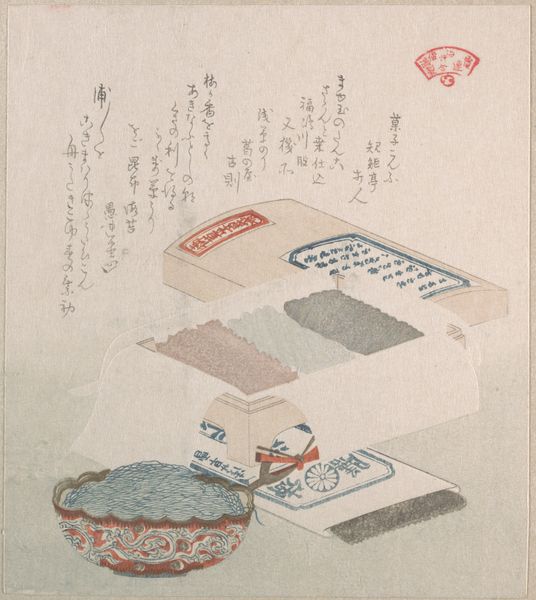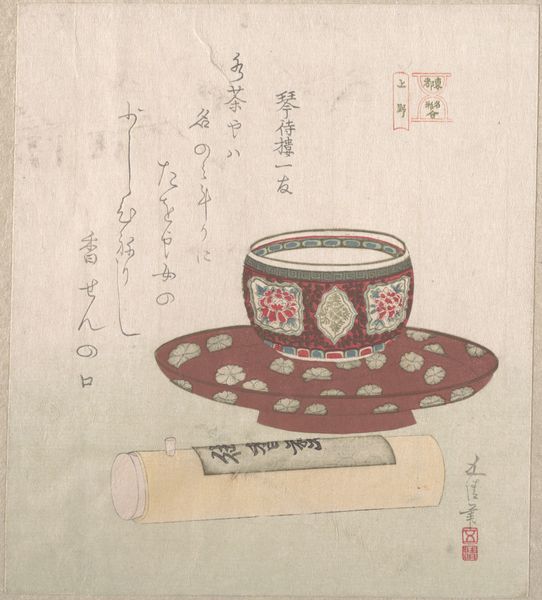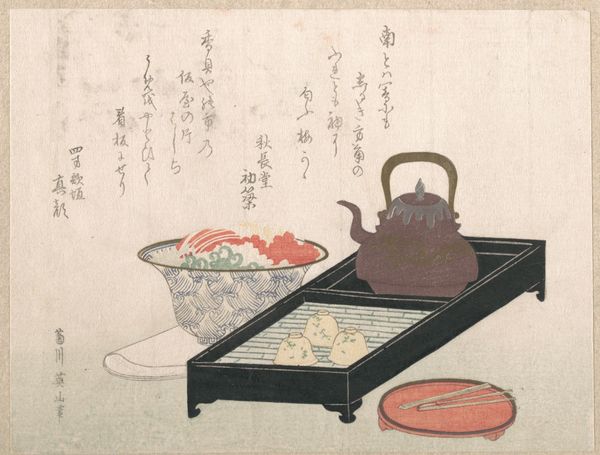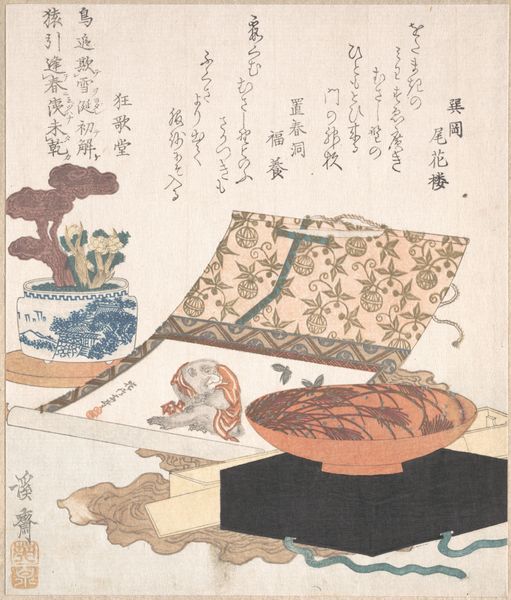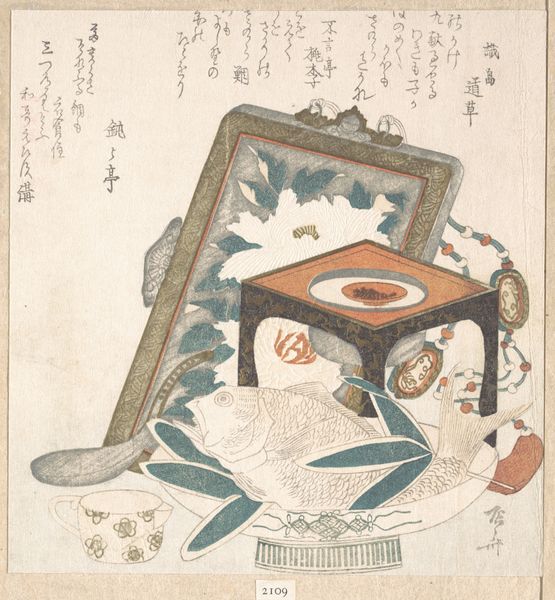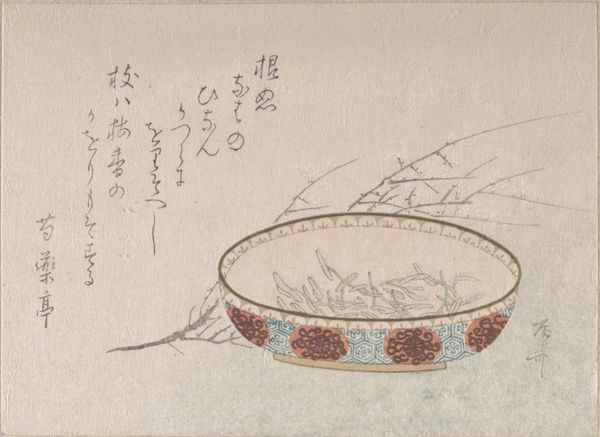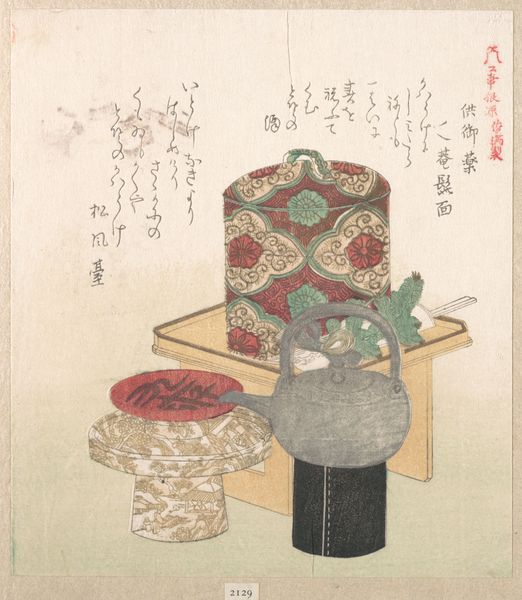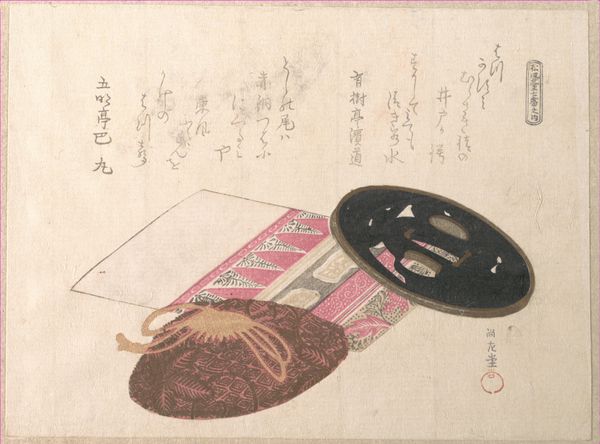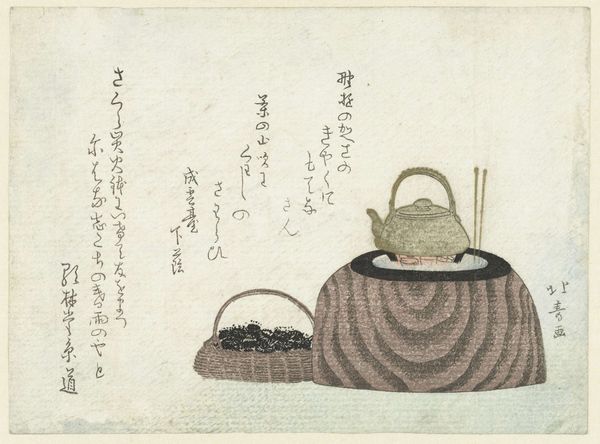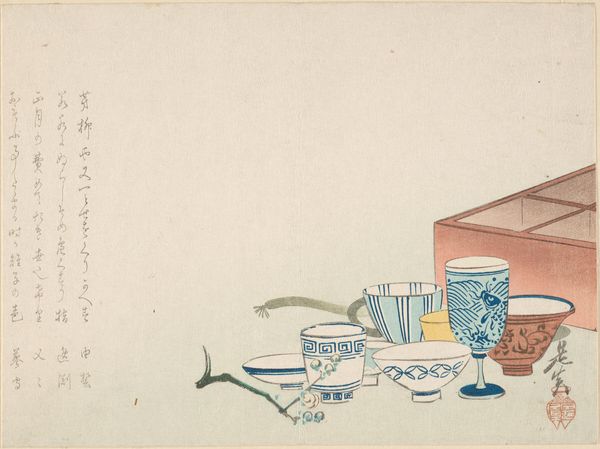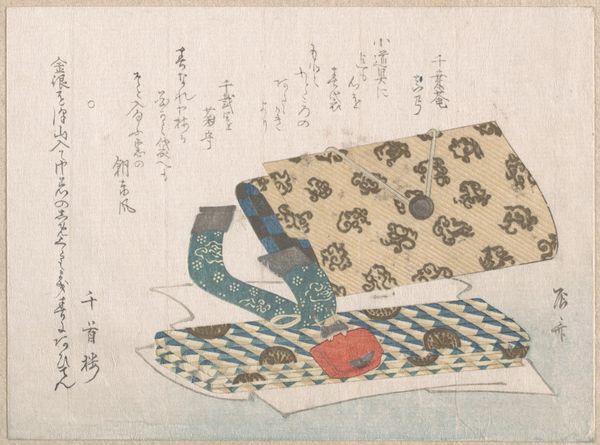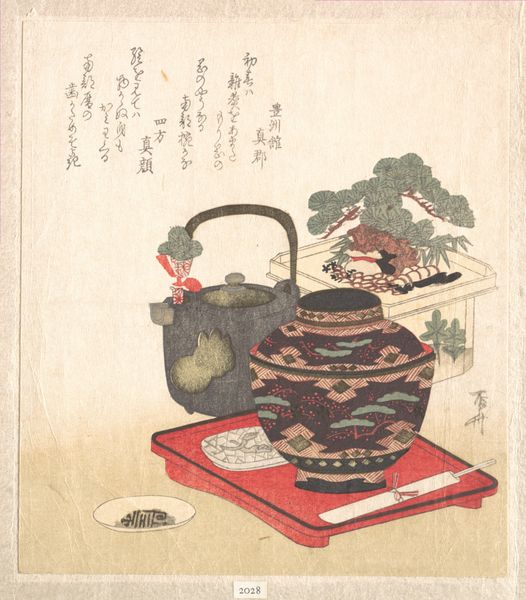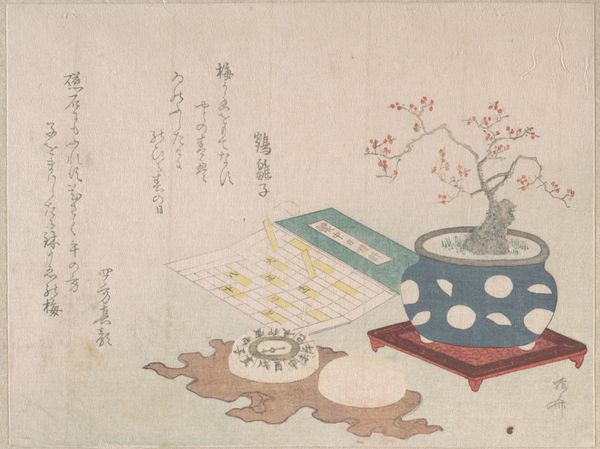
print, watercolor
#
water colours
# print
#
asian-art
#
ukiyo-e
#
watercolor
Dimensions: 5 3/16 x 7 1/8 in. (13.2 x 18.1 cm)
Copyright: Public Domain
Curator: Right now, we’re looking at "Teacup and Tea Heater," a color woodblock print attributed to Ryūgetsusai Shinkō. It probably dates from somewhere in the 18th or 19th century, a lovely example of ukiyo-e currently housed here at the Met. The palette seems deliberately muted, perhaps a technique to direct the viewers focus. What stands out to you, visually? Editor: Well, there’s a definite calmness. I’m immediately drawn to that covered teacup – the little landscape painted on it looks like a memory glimpsed through frosted glass, and also, the stark geometry of the set-up seems to whisper of ritual, the precision of preparing tea. Curator: Exactly! It's interesting how Shinkō captures a moment of quiet domesticity with such stylized elegance. Even the patterned box below, likely for sweets, echoes that structured harmony, reminiscent of formal tea ceremonies that held societal significance. It really underscores how mundane activities can hold profound meaning. Editor: That's right, because those seemingly simple designs have layers. Take those fan shapes on the box: they symbolize authority, wisdom, even divine power – it's more than just ornamentation. And doesn’t tea itself serve as a symbol of tranquility, refinement, spiritual connection? Curator: Precisely. Tea culture had become intrinsically interwoven with both the social rituals and philosophical ideals of the time. I notice that despite its functionality as tableware, the teacup is more like an icon, and that it suggests contemplation and respect through design. Editor: You are right. The calligraphy that appears in this print also adds another layer; while its specific translation might elude me, its presence elevates the visual and, I feel, reminds me that this quiet still life holds a literary or poetic heart as well. Curator: Agreed, the calligraphic text underscores the artwork's deeper significance, hinting at its intended intellectual appreciation for those who knew it and prompting me to further research. Its simple composition speaks volumes about the interconnectedness of life and meaning within ukiyo-e. Editor: Definitely. And it is this quality to represent inner life and meaning so powerfully is what made these objects culturally significant throughout time, and continues to connect me as a modern-day viewer.
Comments
No comments
Be the first to comment and join the conversation on the ultimate creative platform.
